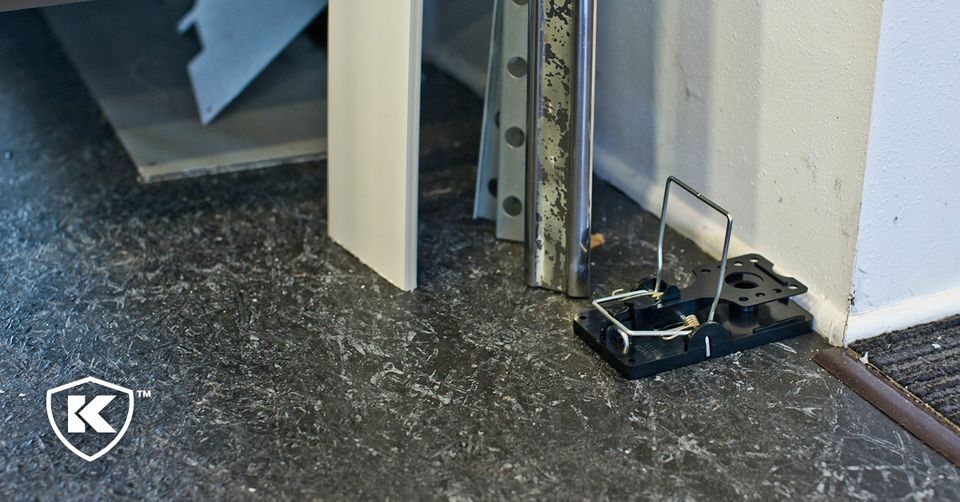8 Common Mouse Trapping Mistakes

So you're attempting to take care of a mouse problem. You've bought the traps, got the bait, and set everything up. But you haven't managed to get a single catch. You might ask yourself, "Has a mouse outsmarted me?" While there may be several different factors that lead to empty traps, most of the time, it's subtle mistakes in the setup process that are the culprit.
Kness Pest Defense has been in the business of catching pests for over 95 years. We understand what common mistakes people make when setting mousetraps. Our team will walk you through basic capturing blunders and how you can avoid them. You'd be surprised at how the smallest change in approach can make the biggest difference.
1. Laying Out The Wrong Bait
One of the first things to consider when trapping mice is what type of bait to use. Despite the common notion that mice love cheese, it is one of the least effective baits out there. You're more likely to succeed in getting a catch by using foods like chocolate (high in carbohydrates), grains, and seed-based foods (such as peanut butter or Nutella). To increase your chances of catching mice, set out multiple traps with different types of bait.
2. Adding A Bit Too Much Bait
Another bait mistake people make when setting up a mousetrap is putting on too much bait. By adding a more-than-needed helping of bait to the trap, you’ll be opening a buffet for the mice rather than a means to an end. It allows them to get access to the food without triggering the trap.
The solution to this mistake is only to add a tiny amount of bait to force them to come in contact with the trap. A good rule of thumb is to use a pea-sized amount. Another way to help reduce the chances of having bait stolen is to invest in traps that are designed to keep the bait contained. The Kness Snap-E Mousetraps have a specially designed pre-formed bait cup that draws mice into the ideal striking zone.
3. Using Bare Hands To Apply Bait and Set Trap
An aspect of trap setup that isn't generally considered is how you handle the bait and trap setting. Always use gloves when doing these two tasks. If you use your bare hands, the trap's effectiveness goes down. Mice have a great sense of smell and can detect your scent if you manage the trap without gloves.
4. Not Utilizing Different Types of Traps
While there isn't anything wrong with using the same type of trap, it limits the number of opportunities you can create for a successful capture. As the old adage goes, don't put all your eggs in one basket.
Mice are naturally curious about their surroundings. Incorporate different types of traps such as snap, glue, and live catch traps in your strategy to use their natural instincts to your advantage. Kness offers several types of mouse trap solutions to help you accomplish your goals.
5. Traps Are Placed Incorrectly
While you might just stick the trap in an area that's out of sight, the mistake of haphazardly placing traps will leave you empty-handed most of the time. Generally, it would be best if you placed traps close to walls. Mice rarely venture out into the open and stick to the safer routes along walls, cabinets, and confined places.
The angle at which traps are placed matters too. Snap traps should be placed perpendicular to the wall with the bait and trigger plate facing the wall. If you use live traps, such as the Kness Ketch-All or Pro-Ketch, make sure any openings are not obstructed. As mentioned before, mice are naturally curious creatures and will investigate these traps.
6. Traps Are Far and Few Between
If you have the bait and general setup nailed down, but you are still seeing little results, ensure that you've placed enough traps. Using more than one trap is a good practice. A professional strategy includes setting traps every two to three feet apart along walls and structures where mouse activity has been identified.
7. Delayed Trapping
If you see signs of mouse activity, don’t wait around. Start trapping as soon as possible. Mice can reproduce at a very high rate, having six to seven offspring in a litter every 21 days or so. A mouse infestation can quickly get out of control if not handled properly. Set the traps wherever activity is present using the strategic placement explained earlier.
8. Not Having Enough Patience
In the world of pest control, patience is truly a virtue. Mice are intelligent, cautious creatures, and it may be a little while before you make your first catch. While you have the traps set, take the extra time to practice good upkeep around your home or business. Limiting a pest's access to easy food and water sources eventually pressures them to take more risks and towards your traps.
For more helpful pest tips and solutions, visit Kness.com/Pest-Control-Center.